
A Word from the Uptime Institute Intelligence Team
Below, we summarize our key research reports from 2022 on topics like digital infrastructure sustainability, the threat of electromagnetic pulses, and cloud's effect on carbon emissions, sharing insights from our Uptime Intelligence team of global industry experts to highlight key findings from the past year, and present a look ahead to 2023 and beyond.
- Andy Lawrence, Executive Director, Uptime Institute Intelligence
Uptime Institute 2022 Research Recap
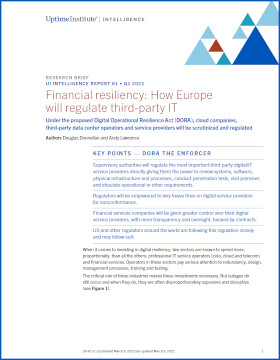
Financial Resiliency: How Europe Will Regulate Third-Party IT
When it comes to investing in digital resiliency, two sectors are known to spend more, proportionally, than all the others: professional IT service operators and financial services.
This report will look into the key elements and expected impacts of the European Union’s Digital Operational Resilience Act (DORA), which is expected to be passed in 2022, after which EU member states will have a year to comply with the legislation.
Download Links:
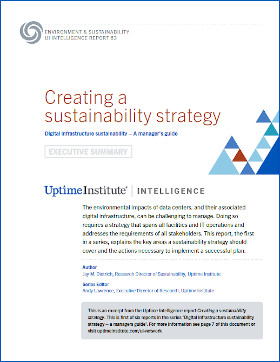
Creating a Sustainability Strategy
Readers of this report will learn about the key elements to include in a sustainability strategy, the actions necessary for a successful implementation, and the processes required to measure progress against goals and objectives.
Download Links:
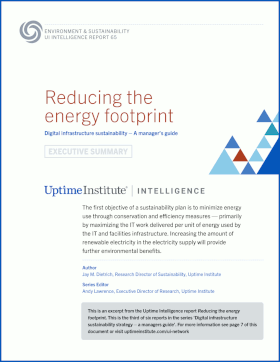
Reducing the Energy Footprint
The first objective of a sustainability plan is to minimize energy use through conservation and efficiency measures — primarily by maximizing the IT work delivered per unit of energy used by the IT and facilities infrastructure.
This report focuses on best practices around tracking both facility and IT efficiency, building a measurement and reporting framework for energy use and increasing the amount of renewable electricity in the electricity supply to further environmental benefits.
Download Links:
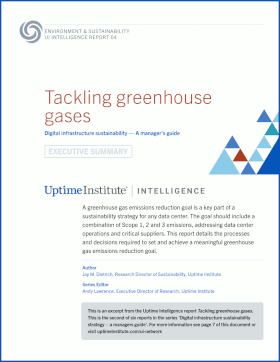
Tackling Greenhouse Gases
A data center GHG emissions reduction plan should optimize and minimize energy consumption and focus on the procurement of renewable or zeroemissions energy to supply the data center. Executive support for staffing and resources to execute the plan is critical.
This report focuses on owned data center operations, including enterprise, colocation facilities, and cloud operations (Scope 1 and 2); IT operations in colocation data centers (Scope 2 and 3); and IT workloads running in public cloud facilities (Scope 3).
Download Links:
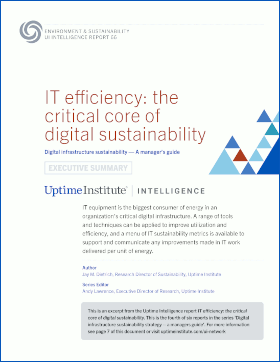
IT Efficiency: The Critical Core of Digital Sustainability
Download Links:
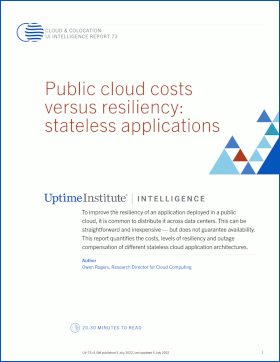
Public Cloud Costs Versus Resiliency: Stateless Applications
This report quantifies the costs of several common architectures for building resiliency for a stateless cloud application and determines the level of protection and compensation for each application.
Download Links:
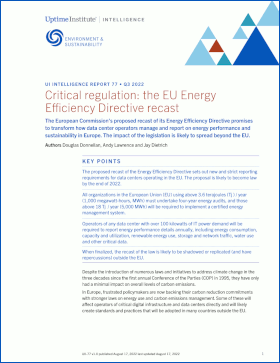
Critical regulation: the EU Energy Efficiency Directive recast
Despite the introduction of numerous laws and initiatives to address climate change in the three decades since the first annual Conference of the Parties (COP) in 1995, they have only had a minimal impact on overall levels of carbon emissions.
In Europe, frustrated policymakers are now backing their carbon reduction commitments with stronger laws on energy use and carbon emissions management. Some of these will affect operators of critical digital infrastructure and data centers directly and will likely create standards and practices that will be adopted in many countries outside the EU.
The European Commission’s proposed recast of its Energy Efficiency Directive promises to transform how data center operators manage and report on energy performance and sustainability in Europe. The impact of the legislation is likely to spread beyond the EU.
Download Links:
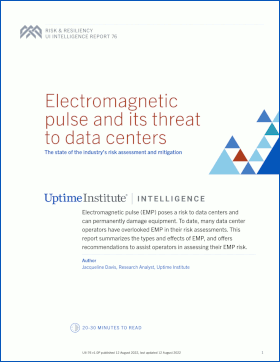
Electromagnetic pulse and its threat to data centers
This report summarizes the types and effects of EMP, and offers recommendations to assist operators in assessing their EMP risk so that they can implement appropriate protection.
Download Links:
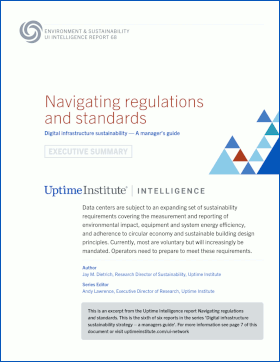
Digital Infrastructure Sustainability: Navigating Regulations and Standards
Investors and customers will increasingly use these standards to make investment and purchasing decisions. Legislators and regulators will use them as the basis of mandates governing the sustainability of operations and periodic sustainability reporting. Over the next decade, any operator hoping to thrive in the data center services marketplace will need to meet the requirements of many of these standards.
Download Links:
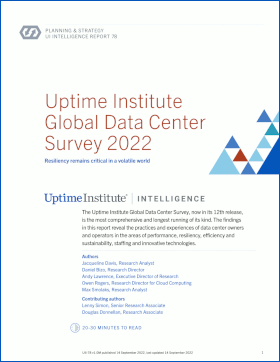
Uptime Institute Global Data Center Survey Results 2022
Download Links:
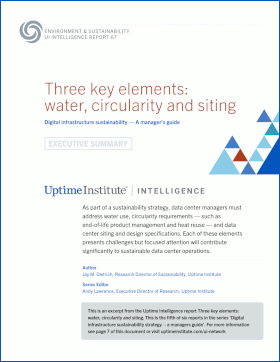
Three Key Sustainability Elements: Water, Circularity and Siting
Water management strategies are dictated by the data center cooling system(s) — managers must minimize water use. Circularity considerations include end-of-life product recycling and reuse, the use of recycled materials, and heat recovery. The siting and design of a new data center and / or the selection of a colocation or cloud facility set the boundaries for the sustainability strategy for all the associated IT.
Download Links:
Silicon Heatwave: The Looming Change in Data Center Climates
However, this well-established pattern has changed. A technology refresh at the start of the 2020s brought a marked increase in power for the new generation of highly performing and efficient servers that are the foundation of many IT infrastructures.
In this report we explore the factors that drove this change and what the implications and options are for data center designers and operators.
Download Links:
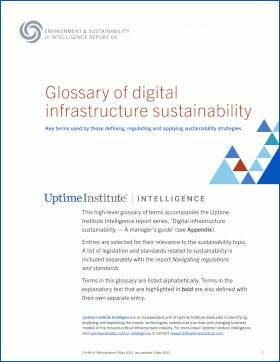
Glossary of Digital Infrastructure Sustainability
An executive summary of each report in the series is available for free on our website, while Uptime Institute Members can access the full versions of each report in Inside Track.
Download Links:
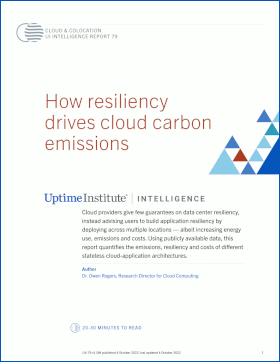
How Resiliency Drives Cloud Carbon Emissions
Download Links:
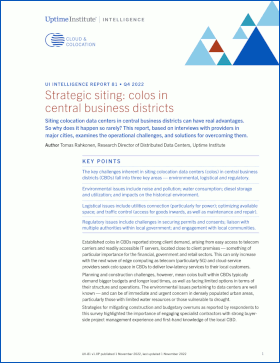
Strategic Siting: Colos in Central Business Districts
Download Links:
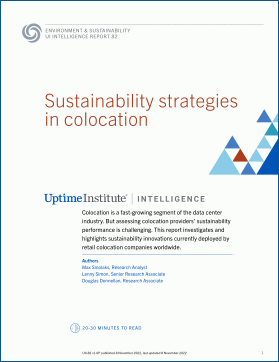
Sustainability Strategies in Colocation
Download Links:
Join Uptime Institute Membership
Uptime Institute welcomes owners and operators of digital infrastructure to join us as our guests at an upcoming Membership event.
To request guest access, visit the Uptime Institute Membership page on our website and fill out the “Join us as a Guest form” to get started!
